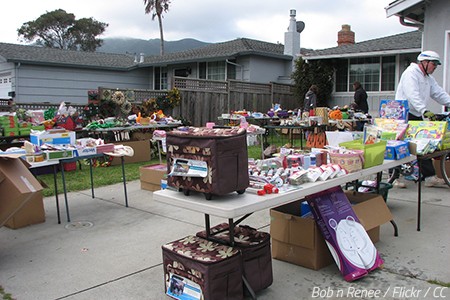Follow your moving timeline and things will be quite alright.
When moving for the very first time, you’ll notice right away that the success of a house move hinges on impeccable organization. Strategic planning when moving to a new home proves to be critical since every hour of every day has to be used efficiently. If not, time often turns out to be insufficient, which in turn leads to a score of problems right before Moving day and on the Big day itself.
Without a doubt, one of the most difficult things to do when moving house is to organize the overwhelming number of tasks you have to complete before moving out.
And here’s the tricky part too – oftentimes, you won’t be sure which tasks to do first and which tasks to postpone for later. As a result, any confusion about the priority of those individual move-related jobs will only make the whole relocation much more complicated than it really is.
To simplify things considerably and to organize your pre-move time well, you’re going to need a moving timeline. In reality, a moving timeline for moving is a moving checklist that not only tells you WHAT to do but also WHEN you should do it so that there’s no confusion about which task comes next.
A moving timeline is practically a moving list of things to do that gives you a time reference for more clarity and increased efficiency.
Here’s your moving timeline checklist: a week-by-week moving list that will guide you through your move by helping you organize your time perfectly.
8 Weeks Before Moving Out
Our moving timeline checklist starts with 8 weeks before move-out day.
Start searching for a house or apartment according to your needs and requirements, and of course – what type of property you can afford to rent or purchase. Explore not just the properties, but also the neighborhoods, crime rate, wages, costs of living, etc.
Make a decision about whether you will hire a professional moving company or whether you will organize a self-move. This is a very important decision because it will determine how you prepare for the upcoming move. When unsure which way to go, follow this link to read the pros and cons of each house moving option.
Get quotes from top-rated moving companies in order to get a good idea about how much your move will cost you. Estimates will help you determine what sort of move you can afford and what services you can hire.
Request in-home surveys from professional movers so that you get accurate cost estimates that will reflect the final price you pay in the end. Home visits will also determine the risk involved in the move such as tight corridors and corners, small doorways, multiple flights of stairs, etc.
Let movers know if you want any extra services such as packing, disassembly of large furniture, temporary storage (delayed delivery), and so on. They will calculate the price of the add-on services and include them in the moving cost estimates.
Create a moving budget to not only learn how much money you will need to cover the moving costs but also to monitor your current expenses and do something if a task requires more money for its completion than you allocated originally.
Inventory your home by creating a detailed list of all the household items found in your place. Then, take a closer look at that home inventory sheet to determine which items you will be moving with you and which items you will leave behind.
6 Weeks Before Moving Out
The moving checklist timeline continues approximately 6 weeks prior to the scheduled move-out date.
Get rid of the items you won’t be moving to the new home. You’ve got plenty of options here depending on their current condition and sentimental value – you can try to sell them at a garage sale or online, or you can donate most of them. Donating lightly-used items to charity is always the noble thing to do before moving away.
Gather the necessary packing supplies in advance so that you don’t interrupt the packing task once you’ve started it. You will need cardboard boxes of various sizes, plenty of bubble wrap to protect all fragile items you own, packing paper as the first layer of protection for breakable items, packing tape to secure bundles and boxes, and a set of color markers to label all containers.
Lower your packing costs by using second-hand boxes for free. How do you do it? First of all, ask friends, neighbors, and colleagues if they have any cardboard boxes they don’t really need. Also, free moving boxes can be obtained from local businesses such as supermarkets, bookstores, home electronics stores, shopping centers, local produce stores, etc.
Start packing up your home. Bear in mind that packing for a move is the most time-consuming task of them all, so the earlier you start boxing up your stuff, the better. Now that you have inventoried your house, you will know exactly what items you will take with you, which basically removes the guesswork from the house packing process.
Book a rental truck if you have made the informed decision to move house without movers. Get in touch with the best truck rental companies in the country and see what they offer and at what prices.
Start looking for top-rated auto shippers if you will need to have your vehicle shipped across the country. This is often the case when you plan to fly to the new home or when you own a second car that will need to be transported by a professional car shipping company.
4 Weeks Before Moving Out
The moving house timeline enters the 1-month period prior to moving out – that’s a fairly critical moment during the pre-move preparations.
Continue packing up your things. The recommended path of packing is to begin the process from the hardest rooms to sort out and pack (storage areas such as the attic, basement, garage, spare rooms, walk-in closet, and kitchen) and then work your way towards the easiest rooms to pack (bedroom and living room).
Pay a visit to your family physician and dentist and ask for your medical records and those of your family members. The idea here is that you’ll need those records in order to register with another doctor in the destination city or town.
Take your pet or pets to the vet for a thorough checkup before you move away. Don’t wait until the last moment to do it as more important tasks will keep popping up as Moving day approaches and you may not find the time to do so. Once at the vet’s office, request your pet’s vaccination record as well.
Contact your children’s school and ask for their academic records so that you can enroll your kids at a new school in the new city or town. If possible, arrange for those school records to be transferred directly to the new educational institution.
Cancel any subscriptions, home delivery services, and memberships at various clubs or organizations.
Take your car to be serviced if you plan to drive across the country to your destination. You have to be sure the vehicle is ready for the road trip to the new home.
Contact your friends and ask them if they can help you pack and move if you’ve chosen not to hire professional movers. In reality, you’re giving your pals a month’s notice in the hope that you won’t ruin their own plans.
How to Get Friends to Help You Move
2 Weeks Before Moving Out
Your timeline for moving has guided you well until there are a couple of weeks left until the move-out date. With just 14 days left, things are about to get a bit stressful, so make sure you follow this moving organizer.
Prepare Open First boxes as you’re packing up your things. These are essentials boxes that will contain essential items that you will need while your regular everyday stuff is in transit and you won’t have access to it. Also knows as survival kits, those boxes will stay with you at all times.
Contact your current utility companies and schedule the disconnection of the home utilities you’re using at the moment. The truth is that you don’t want to be paying for any of the utility services when you’re already gone.
Get in touch with the service providers in the new city or town and arrange for the connection of the main house utilities in the new home. Needless to say, you’ll want to have electricity and running water in the new place when you arrive there.
Change your address with the USPS – you’re moving house and the address is moving with you. You can change your address in any of these 4 ways: 1) in person by visiting the nearest post office, 2) online by visiting the official USPS webpage, 3) by phone, or 4) by mail.
Reserve the elevator when moving out of an apartment building. Contact the building management and reserve the elevator for the move-out date to avoid problems when your movers arrive. See if you’ll need to obtain a parking permit for the moving truck as well.
Start thinking about organizing a farewell party and send out invitations to your best friends. You can keep it simple like an informal get-together – the important part is to see your pals one more time before you go away.
1 Week Before Moving Out
There are only 7 days left until Moving day and things can get a bit chaotic around the house. Remember to stick to this moving timeline to keep chaos away from your doorstep.
Call your moving company to confirm that everything’s going according to plan and that they will be parking their truck in front of your home on the pre-arranged day and time.
Assess your packing progress – by that moment, you should have packed up most of your belongings. You still have like 6 days left to pack up what’s remaining but the bulk of the task should have been completed. If you fail to see the end of the packing marathon in end, then you may have to ask for help.
Check whether you have any outstanding bills and if you do, pay them up so that you can move out without any debts.
Turn your attention to the large furniture items in your home. What have you decided to do with them? Keep in mind that when moving long distance, you’ll probably pay more for their transportation than what they are worth. Still, if you’re moving any furniture – dresser, bed, desk, couch, etc., then you can start disassembling them.
Start using up your food supplies roughly a week prior to Moving day and don’t purchase any more food than you can eat up until it’s time to go.
Defrost your fridge a couple of days before movers arrive. Clean it and let it dry up completely for at least 24 hours.
Ask a neighbor or the new renters/owners to forward your mail to the new address in case your change of address request hasn’t been processed yet. Don’t forget to leave some cash with them for the favor.
What to Do With Food When Moving
Moving Day
Here’s your moving day timeline – all your preparation comes down to this one day. So, you’d better be ready for it.
Get up early. There is always something extra to do on moving day which has not been initially planned. Or something may come up at the last minute, so you’d better be there, ready for anything and staying away from serious moving day mistakes that can ruin your chances of a successful move.
Keep young children and pets safe. It’s best to arrange for a family member to look after your loved ones in a room away from the action so that you can concentrate fully on the tasks at hand.
Greet the movers and show them what they have to move or maybe pack if you’ve opted for that extra service. In most cases, they will know exactly what to do without too much explanation.
Keep the documents your movers have given you in a safe place. Don’t sign any papers that you don’t fully understand, and never ever sign a blank document no matter how trustworthy your movers may seem.
Confirm that your movers have your destination address and your phone number in case of a problem.
Take one final walk through the home to see whether everything looks like it should be. Check whether all windows and doors are closed and secured before you leave the place.
Moving Day Checklist: How to Survive Moving Day in 20 Steps
The post 8-Week Moving Timeline: Moving Checklist appeared first on The Moving Blog.







